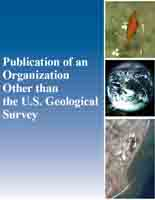Practical genetic diversity protection: an accessible framework for IUCN subpopulation and Evolutionarily Significant Unit identification
Links
- More information: Publisher Index Page (via DOI)
- Open Access Version: Publisher Index Page
- Download citation as: RIS | Dublin Core
Abstract
The International Union for Conservation of Nature (IUCN) sets global conservation standards, including the Red List of Threatened Species and the Green Status of Species. Recent analyses showed that genetic diversity has not been effectively considered by IUCN species assessments, despite being fundamental to species’ fitness and adaptive potential. Incorporation of genetic diversity into IUCN assessments can support its successful long-term conservation. To enhance the preservation of genetic diversity, assessments should include genetically meaningful within-species units. Subpopulations are recognized units by the IUCN for protecting natural connectivity, however infrequently evaluated. Evolutionarily Significant Units (ESUs) are currently not recognized as a formal unit by the IUCN. However, incorporating ESUs into conservation frameworks could significantly enhance our capacity to identify and protect adaptive genetic diversity. To facilitate inclusion of these units in IUCN assessments, we outline a widely applicable framework for their identification that uses non-molecular and molecular data for global accessibility.
| Publication type | Preprint |
|---|---|
| Publication Subtype | Preprint |
| Title | Practical genetic diversity protection: an accessible framework for IUCN subpopulation and Evolutionarily Significant Unit identification |
| Series title | EcoEvoRxiv |
| DOI | 10.32942/X2RK9Q |
| Publication Date | May 05, 2025 |
| Year Published | 2025 |
| Language | English |
| Publisher | EcoEvoRxiv |
| Contributing office(s) | Wetland and Aquatic Research Center |
| Description | 64 p. |


